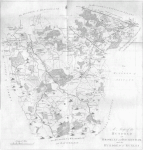Loring Hall
AC with 0 elementsCountry houses in KentGrade II listed buildings in KentGrade II listed housesHealth in Kent ... and 3 more
Hospitals in KentHouses completed in 1760Psychiatric hospitals in England

Loring Hall is a private mental health care facility in North Cray, London Borough of Bexley. Formerly known as Wollet Hall or Woollet Hall, it is a Grade II listed building.
Excerpt from the Wikipedia article Loring Hall (License: CC BY-SA 3.0, Authors, Images).Loring Hall
Water Lane, London North Cray (London Borough of Bexley)
Geographical coordinates (GPS) Address External links Nearby Places Show on map
Geographical coordinates (GPS)
| Latitude | Longitude |
|---|---|
| N 51.430833333333 ° | E 0.13944444444444 ° |
Address
Loring Hall
Water Lane
DA14 5EL London, North Cray (London Borough of Bexley)
England, United Kingdom
Open on Google Maps









